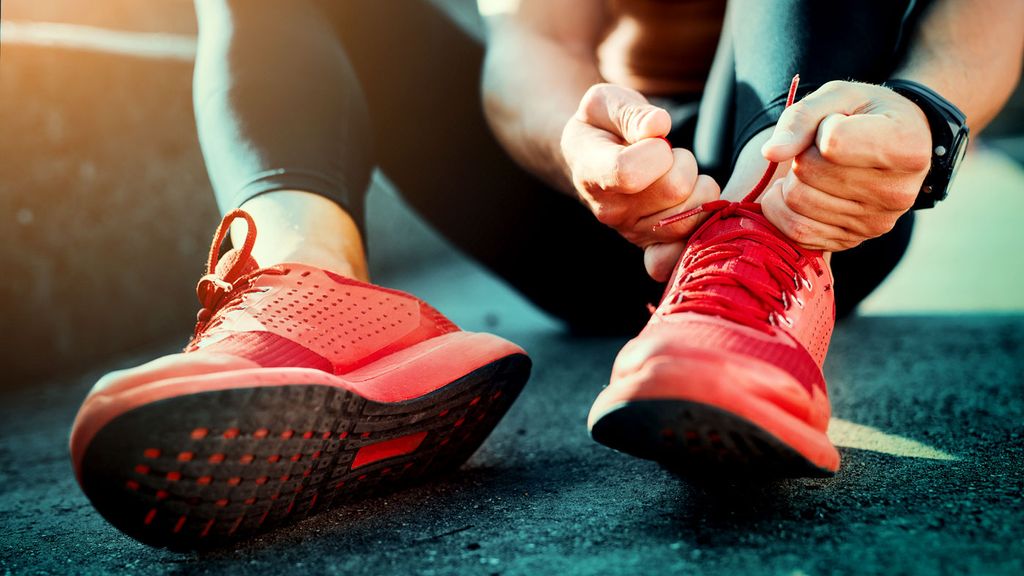
Whether you’re returning to exercise after a bit of a hiatus or taking it up for the first time, a few diet tweaks can make all the difference to how you feel and perform.
Prepping for sweating
Whether you’re doing weights or cardio or a bit of both, it’s always a good idea to have a carbohydrate snack prior to your workout to fuel your body for a solid session.
“It might just be a banana, a piece of toast or a glass of milk – it doesn’t have to be huge,” sports dietitian Katherine Shone, told Coach.
That said, some people prefer to work out on an empty stomach, so Shone suggests playing body detective and trying different things to find what works for you.
“There’s no one hard-and-fast rule,” she points out.
“Be confident in trying things and experimenting then notice the feedback your body is giving you and tweak your food as required.”
Handling the hunger
One of the first things you might notice about your new active lifestyle is a different hunger pattern.
During and immediately after an aerobic workout — such as running, cycling or swimming — you will likely find your appetite is suppressed, while strength training can make you ravenous quite quickly.
An hour or so after a huffy-puffy workout, the tummy grumbles often rev right up as your body looks to restock its fuel supplies.
“Aerobic exercise actually suppresses hunger hormones so you may find you are not feeling hungry immediately after your workout because of the interaction of those hormones,” Shone says.
“But anaerobic exercise, such as weightlifting, can make you hungry straight away.”
Regardless of when the hunger strikes, the first thing to remember is that this response from your body makes perfect sense.
“If we’re using up more energy because we’re doing more exercise, it makes sense that the body has got to replace the energy that we’ve used up,” Shone points out.
“There’s nothing to be fearful of hunger or appetite. It’s just another physiological signal that we’re getting from our body to indicate there is a need that we need to fulfil – just like if you are hot you take your jumper off.”
Your best bet to slay hunger is to have some protein within an hour of your workout.
“A beginner to strength-based exercise has actually got higher protein requirements than someone who is just maintaining their strength,” Shone points out.
RELATED: What to eat after you exercise: suggestions from the Australian Institute of Sport
Use your next meal
Whether it’s a dawn boot camp or an after-work spin class, most of us tend to naturally schedule our workouts prior to our next meal, which actually works out really well nutritionally.
“Look at your lifestyle and see where you’re finishing your exercise,” Shone says.
“If it’s around a mealtime, then follow up your workout with a balanced meal with some protein to help build muscle, some carbohydrates to top up those energy stores you’ve used up, and some colour for vitamins and minerals.”
So that might be some eggs for protein and some grainy toast for carbs with some tomatoes, spinach and avocado.
“The other critical component for feeling full and satisfied is fat — avocado can provide that, or you could spread some butter or margarine on your toast to satisfy that need,” Shone says.
If your workout is mid-morning or mid-afternoon and it’s a while before your next main meal, then Shone says you can snack to help replenish yourself.
“If it’s snack time, I love yoghurt because it’s got both protein and carbohydrate,” she says.
“Matching it with some colour from some mango or berries or chopped apple is great. You could even sprinkle some nuts or muesli on top to add to its satiety factor.”
RELATED: Why athletes eat Greek yoghurt (and why you should too)
Keep hydrated
The more you sweat, the more liquid you need to feel energised and keep hunger in check.
“You don’t want to be starting your workout already dehydrated because it’s going to make the workout harder than it needs to be,” Shone says.
“Ideally you start your workout nice and hydrated then drink as much as you can within tolerable limits during your workout. It will not only minimise how dehydrated you get but will also help keep your body temperature cool.”
At a base level, we all need about 40ml of fluid per kilo of body weight to be adequately hydrated, so somebody who is 70kg would need 2.8 litres of water per day.
“Then you want to be adding on the fluid you would be losing in your sport, which might be another 500-700ml or even more for some people” Shone explains.
But that doesn’t mean you have to be guzzling water by the gallon since we also ingest water through foods we eat, particularly fruit and vegetables.
For that reason, your best gauge of hydration is the colour of your wee – if it’s nice and clear then you’re likely well hydrated. If it’s looking at bit yellow, then drink up!
Make movement fun
While nutrition can be a great tool for enhancing weight loss, Shone says it’s important to keep exercise enjoyable and not get too bogged down in dietary rules.
“First and foremost, exercise has got amazing health benefits, irrespective of what might happen to your weight,” she says.
“Concentrate on exercising for the sheer enjoyment of it, the social connection you get, and the health benefits — rather than worrying about exercise to control and manage your weight.”
Because ultimately, if you enjoy your lifestyle choices, a healthy body will likely follow suit.
“If you’re connecting with your body, moving it in ways that are enjoyable for you, and honouring appetite, you are a step closer to becoming your healthiest self,” Shone says.
[“Source-coach”]
